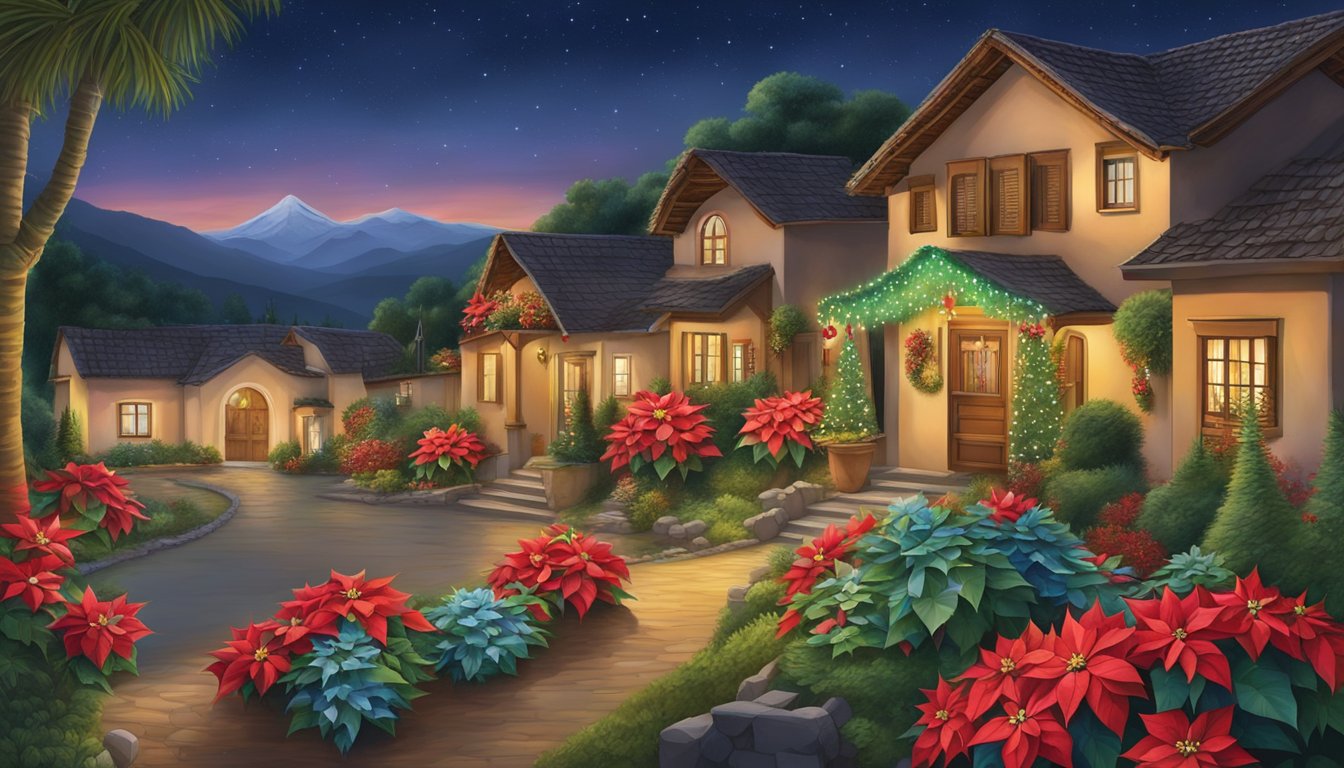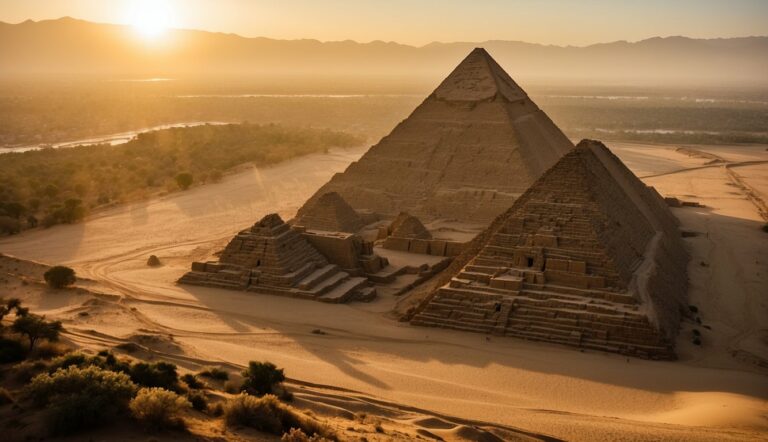Christmas in Guatemala: Experience the Rich Christmas Traditions of Guatemala
Christmas in Guatemala is enthusiastic about tradition and culture. It is celebrated with a vibrancy that stands out even in a region known for its colourful holiday customs.
This celebration embodies the religious significance of the holiday and reflects the country’s diverse cultural heritage, which includes more than 20 ethnic groups.
Guatemalans begin their festivities in the lead-up to Christmas with unique traditions like ‘La Quema del Diablo,’ the burning of the devil, which signifies the purification of their homes and lives before the holiday season.

On Christmas Eve, a pivotal holiday time, families gather to prepare and enjoy festive dishes, with Guatemalan tamales as a customary centrepiece.
The night is lively and filled with anticipation, culminating in the exchange of gifts at midnight, marking a deviation from the morning of December 25th tradition observed in some other countries.
Integral to the Guatemalan Christmas is also the ‘Posadas Navideñas,’ a reenactment of Mary and Joseph’s search for lodging, which fosters a sense of community and shared faith.
As the 24th transitions into the 25th, the air in Guatemala is alive with the sounds of firecrackers and music, adding to the already vibrant atmosphere.
Nativity scenes are another common sight. They represent the religious aspect of the holiday and showcase the artistic expression of the season.
Involving the entire community, the Christmas celebrations in Guatemala are a time for families to come together, share joy, and perpetuate the customs passed down through generations.
Historical Background of Christmas Traditions in Guatemala

Christmas celebrations in Guatemala, Central America, have deep historical roots that intertwine Spanish Catholic traditions with indigenous customs.
Introduced by the Spanish during the colonial period in the 16th century, Catholicism brought with it the religious observance of Christmas. This melded with the traditions of the diverse indigenous groups to form a unique cultural tapestry.
The Spanish conquistadors and missionaries popularized the celebration of Christmas as a solemn religious festival. They introduced practices such as Nativity scenes and the Midnight Mass, significant in Guatemala’s festive customs.
Despite the Spanish influence, the indigenous groups maintained certain pre-colonial traditions that fused with the Christian celebrations.
Such practices gave Guatemalan Christmas its distinctive flavour, characterized by colourful parades and unique rituals.
Over time, a distinct celebration known as ‘Las Posadas’ emerged, reflecting Mary and Joseph’s journey.
It starts on the 16th of December and continues until Christmas Eve, marked by small processions and communal gatherings.
Additionally, ‘La Quema del Diablo’, held on December 7th, represents the cleansing of evil to prepare for the holy season.
This event involves the burning of effigies symbolizing the devil, signifying a fresh start for the festivities to come.
Traditional Festivities and Customs

Guatemala’s Christmas celebrations are an intricate blend of historical traditions and vibrant cultural practices. From the symbolic burning of the devil to community gatherings in the form of posadas, the streets are filled with color and music.
La Quema del Diablo
La Quema del Diablo (The Burning of the Devil) is a traditional event that occurs on December 7th. It symbolizes the cleansing of evil and misfortune.
Guatemalans cleanse their homes of trash and unwanted items, culminating in street bonfires.
Effigies of the devil are burned, marking the beginning of the Christmas season.
Las Posadas
Las Posadas are processions reenacting Mary and Joseph’s search for lodging from December 16th to the 24th.
Neighbours and families participate in these nightly events, singing canciones de posada while children carry lanterns.
This tradition fosters community spirit and leads up to Christmas Eve.
Noche Buena and Christmas Eve
Noche Buena refers to Christmas Eve in Guatemala.
Families gather to prepare and share a feast that often includes tamales and ponche de frutas.
At midnight, fireworks light up the sky, and many attend midnight mass. Nativity scenes, or nacimientos, featuring Mary, Joseph, and baby Jesus, are prominently displayed.
Christmas Day Celebrations
On Christmas Day, Guatemalans continue celebrations with a relaxed atmosphere after the excitement of Noche Buena.
Throughout the day, people visit friends and family to exchange wishes of Feliz Navidad.
Marimba music is a common feature, contributing to a joyous setting for the Christmas dinner.
Culinary Delights

Guatemalan Christmas is characterized by its rich culinary traditions, where each dish carries the warmth of the holiday spirit and the complexity of local flavours.
Christmas Foods
In Guatemala, the mainstay of Christmas Eve’s dinner is tamales, especially tamales colorados, which are red-coloured tamales owing to the rich sauce made from tomatoes, red bell peppers, and spices.
They are typically stuffed with a piece of meat, often chicken or pork, and are wrapped in banana leaves, which impart a unique flavour.
Ham is another festive food prepared with glazes that combine sweet and savoury ingredients like pineapple and spices.
Sweet Treats
Guatemalan Christmas wouldn’t be complete without sweet delicacies.
Raisins and prunes often adorn and sweeten dishes throughout the holiday season.
Traditional Christmas desserts include variations of rice puddings and sweet tamales filled with sugary mixtures.
Traditional Beverages
Festive drinks are an essential part of the celebrations.
Ponche, a warm fruit punch simmered with cinnamon and sweetened with sugar, often includes tropical fruits such as pineapple and is typically served with a splash of rum.
Atol de elote, a hot, creamy corn-based drink, provides comfort during the cooler nights of the Christmas season.
These beverages are not just drinks but a toast to Guatemalan heritage and conviviality.
Symbols and Decorations

Traditional Christmas symbols and decorations in Guatemala amalgamate local customs and historical influences.
These decorations are integral to the season’s festivities, infusing the air with the scent of pine and the colour of indigenous craft.
Nativity Scenes and Nacimientos
Nativity scenes, or nacimientos, are a centrepiece in Guatemalan Christmas decorations.
Artisans create detailed representations of Bethlehem, with intricate figurines of Mary, Joseph, and the baby Jesus.
What sets Guatemalan nacimientos apart is their use of natural materials like moss and fresh pine needles, adding a local touch to the biblical narrative.
Families typically begin assembling these scenes at the start of Las Posadas, which marks the journey of Mary and Joseph.
Christmas Trees and Street Decor
While Christmas trees are not as traditional in Guatemala as in other parts of the world, they have been adopted in urban areas, where festive Christmas trees often hint at Guatemalan flair.
Homes and public spaces on the streets showcase vibrant decorations with coloured paper lanterns and natural elements.
Streets come alive with symbolic decor as Las Posadas processions take place, symbolizing Mary and Joseph’s quest for lodging.
Social and Cultural Aspects

Christmas in Guatemala encompasses a tapestry of traditions highlighting the country’s rich cultural mosaic. It is marked by a blend of indigenous customs and Christian celebrations, showcasing a unique fusion of family, faith, and community.
Family and Community
In Guatemala, family and community are the cornerstones of holiday festivities.
Friends and families gather to participate in Las Posadas, which takes place from December 16th to the 24th.
This period involves processions that symbolize Joseph and Mary’s search for lodging.
Groups of people from local neighbourhoods come together, fostering a sense of togetherness and community spirit.
Bonfires, common on December 7th during ‘La Quema del Diablo’ (The Burning of the Devil), serve to cleanse the home of evil and as a reason for community gathering.
Religious Observances
Religious observances during Christmas in Guatemala profoundly reflect the deep-rooted Catholic and Christian beliefs intertwined with indigenous practices.
The Feast of the Immaculate Conception on December 8th is a significant celebration for Guatemalan Catholics.
Additionally, the country’s more than 20 ethnic groups, each with distinct traditions, add to the diversity of religious customs.
Intricately designed sawdust carpets, often seen in religious processions, demonstrate the blend of Catholic and indigenous art.
Their vibrant colours and complex patterns are a testament to the meticulous craftsmanship of the Guatemalan people.
Modern Celebrations

In Guatemala City, the Christmas season is a vibrant mix of traditional practices and contemporary festivities. Firecrackers and sparklers fill the air, infusing the atmosphere with excitement.
These pyrotechnics are common, contributing to the celebratory smoke that signals the holiday season.
One of the unique events held annually is ‘La Quema del Diablo’ or ‘The Burning of the Devil’. On December 7th, communities gather to burn effigies representing evil, symbolizing the purification of their homes and neighbourhoods before the Christmas celebrations begin in earnest.
Las Posadas is another significant tradition from December 16th to the 24th. Families and neighbours join in reenactments of the Virgin Mary and Joseph’s search for shelter, fostering a strong sense of community.
While the figure of Santa Claus is known in Guatemala, the season’s focus leans more towards religious observation and familial gatherings rather than the commercialised Santa-centric celebrations seen in some other cultures.
Midnight Mass is a central component of the Christmas Eve celebration, bringing families together in peace and reflection before returning home for a festive meal.
The culmination of festive celebrations is often the gathering on Christmas Eve, with elaborate meals and gift exchanges at midnight, signifying the start of Christmas Day. This blend of solemn rituals and joyous community engagement underscores the season’s spirit in Guatemala City.
The Influence of Other Cultures

Guatemala’s Christmas celebrations are a rich tapestry that weaves indigenous customs and international influences together. These influences echo throughout the traditions and decorations distinct to the festive season.
Adoption of International Traditions
The Christmas tree, a tradition widely believed to have originated in Germany, has entered Guatemalan festivities.
These trees are often decorated with lights and ornaments, combining local handcrafted items with more universal Christmas motifs.
Various decorations adorn homes and public spaces across Guatemala in tandem with the Christmas tree. These include:
The figure of Santa Claus, primarily from American and European tradition, is present in Guatemalan celebrations. On Christmas Day, he brings gifts to the children.
Las Posadas, a tradition common in Mexico and adopted by Guatemala, involves reenactments of Mary and Joseph’s search for lodging in Bethlehem. It is celebrated from December 16th through the 24th.
Guatemalan Christmas reflects cultural exchange, maintaining its distinct nature while embracing elements from across the globe.
Frequently Asked Questions

What are the traditional celebrations for Christmas in Guatemala?
Guatemalans celebrate Christmas with vibrant traditions such as ‘Las Posadas’, processions between the 16th and 24th of December, and ‘La Quema del Diablo’, a ritual burning of the devil effigies on December 7th.
Fireworks light up the sky throughout the season, especially at midnight on Christmas Eve.
What foods are typically served during Christmas in Guatemala?
During Christmas, Guatemalans enjoy traditional dishes like tamales, which are packets of masa stuffed with meat and steamed in banana leaves, and ponche, a warm fruit punch.
The Christmas Eve dinner is a significant meal that includes various Guatemalan delicacies.
How is Christmas decor unique in Guatemala?
Christmas in Guatemala features unique decorations, including pine needles and elaborate nativity scenes called ‘nacimientos’. Handmade ornaments and lights adorn homes and streets, creating an unforgettable festive atmosphere.
Can you describe the history of Christmas celebrations in Guatemala?
Christmas in Guatemala is deeply rooted in the country’s rich Spanish colonial history and indigenous cultures. It combines Catholic religious practices with local traditions.
Over the centuries, this blend has given rise to the unique Guatemalan Christmas customs celebrated today.
What kind of parades are held in Guatemala for Christmas?
In Guatemala, Christmas parades are often religious, with ‘Las Posadas’ being the most notable.
These parades recreate Mary and Joseph’s search for shelter, with participants moving from house to house, singing carols and sharing in the festive spirit.
What is the Guatemalan equivalent name for Santa Claus?
In Guatemala, Santa Claus is not as prominent as in other cultures. However, the tradition of giving gifts does exist and is typically associated with the Baby Jesus, El Niño Dios, rather than a Guatemalan equivalent of Santa Claus.
Gifts are commonly exchanged at midnight on Christmas Eve.







